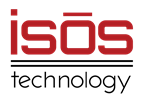Guest Contributor: Wayne Sadin, Advisor, Acceleration Economy

Atlassian has, since its founding in 2002, supplied software tools that help IT departments deliver value. Today Atlassian provides these tools to over 230K customers and 10 million users! 20 years ago, Atlassian—like almost every vendor—provided software for customers to install and run in their on-premise data centers. Just as Atlassian’s customers have been migrating on-premise software to hyperscale clouds, so too has Atlassian.
What "Cloud Migration" Really Means
Let’s look at what cloud migration might actually mean. The simplest migration is called a lift-and-shift, and basically involves licensing virtual servers in a Cloud data center and copying your software and data from the on-premise servers to these cloud servers. A lift-and-shift migration is pretty simple, but it doesn’t take advantage of modern cloud architecture, and leaves the customer responsible for much of the same maintenance they did on-premise (this cloud usage is called Infrastructure as a Service, or IaaS).
In the early days of hyperscale cloud, firms like Facebook, Alibaba, and Google faced a unique problem: architecting, building, and operating complex software platforms that could efficiently and securely serve hundreds of millions (now billions) of concurrent users every minute of every day, around the world. Many brilliant engineers and computer scientists worked to create brand-new tools that comprise the modern hyperscale cloud ecosystem.
A lift-and-shift cloud migration allows a firm to reap some hyperscale benefits, mostly infrastructure performance, scalability, and security. But it doesn’t address many significant hyperscale advantages: applications that perform faster and scale better, are more secure, are updatable on the fly without operational disruption, and that take advantage of hyperscale services like AI/ML, advanced databases, and APIs (called Platform as a Service, or PaaS).
Re-platforming your application for hyperscale architecture is a significant project, but for applications that matter to your business, it’s often worthwhile. A properly done cloud re-platforming can yield both a better customer experience and reduced IT support effort (by the way, a re-platformed vendor product offered via a cloud subscription is called a Software as a Service, or SaaS, application).
How Cloud Migration Impacts Atlassian Users
And that brings us back to Atlassian, who announced in late 2020 that one of its on-premise deployment options, Server, was ending, and Server products were being deprecated over the next 3 ½ years. (The end-of-support date for Server products is February 15, 2024).
I don’t work for Atlassian, so I’m not privy to the decision process or the specific coding changes they are making. But in discussions I’ve had with Atlassian, along with experts from Atlassian Solution Partner Isos Technology and Atlassian app vendor Appfire, I've heard them echo the themes I explained above: Cloud is the future for the Atlassian ecosystem for the same reasons it’s the future for most IT departments.
If you’re an Atlassian Server customer, you’re coming up on some choices and dates that matter greatly. In general, you can:
- Stay with on-premise Server products and assume full responsibility for maintenance;
- Move to Atlassian Cloud products
- Move ASAP and get cloud advantages in exchange for some additional work integrating and migrating your Atlassian ecosystem now;
- Move ALAP and defer cloud advantages in favor of a potentially easier ecosystem migration down the road (although there are no guarantees here);
- Migrate to Atlassian Data Center products if you want vendor support in an on-premise environment.
Making the Best Migration Decisions for Your Organization
Atlassian tools can be complex; they’re often customized and integrated for your specific workflows, and they support a rich ecosystem of Marketplace apps that add functionality to the tools. Deciding what’s best for YOU is far beyond the scope of an article.
But two things I can say with certainty based on 30 years as a CIO and CTO:
- The time to plan, budget, and decide is NOW! Changing IT workflows and tools takes time, thought, communication, and testing…and 2024 is coming up quickly.
- If you’re migrating to SaaS apps—from on-premise Atlassian tools and on-premise apps from vendors like Appfire—that have different feature sets and development plans, don’t just lift and shift your workflows and processes. Spend time evaluating your current and future IT environment, work with an Atlassian Solution Partner like Isos Technology who can show you what the new Cloud ecosystem can do for you, and incorporate these Cloud tools plus your own improved workflows into an integrated change program.
Cloud is now, for you and for your vendors. Atlassian and its partners are moving into the future, and they want you to come along. Watch the video below to learn about our upcoming webinar on August 17th.
